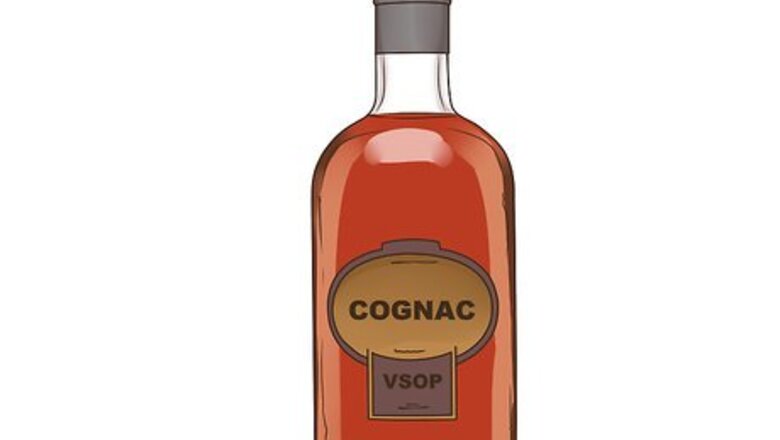
views
Enjoying Cognac Straight
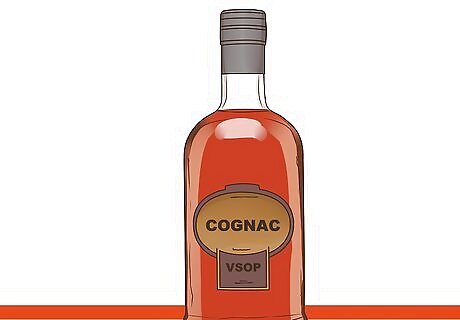
Choose an older liquor. Younger, inexpensive cognacs don’t have the complexity or flavor of older cognacs. Instead choose a mid-range Very Superior Old Pale (VSOP) cognac or a luxurious Extra Old (XO) cognac. VSOP cognacs are aged for a minimum of 4 years. XO cognacs are aged at least 6 years. Higher end brands can be aged for 20 years or more.
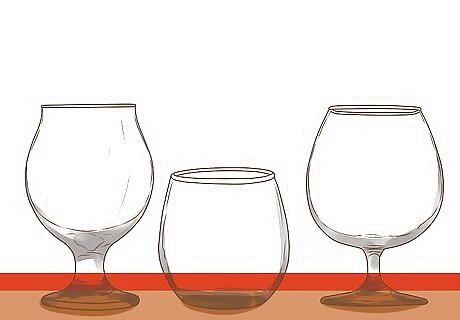
Use a tulip glass, balloon glass, or wobble snifter. The right kinds of glassware will help warm the cognac and funnel the rich aromas to the top of the glass. If you don’t have a tulip glass, balloon glass, or wobble snifter, use a regular wine glass instead. Tulip glasses are long, bell-like wine glasses. This shape allows the aromas to concentrate on the surface of the cognac. Balloon glasses have a large body and a short stem. These glasses allow you to evenly warm the cognac. Wobble glasses look like stemless balloon glasses. These glasses are hard to set down, forcing you to hold the cognac in your hand and bring it to temperature.
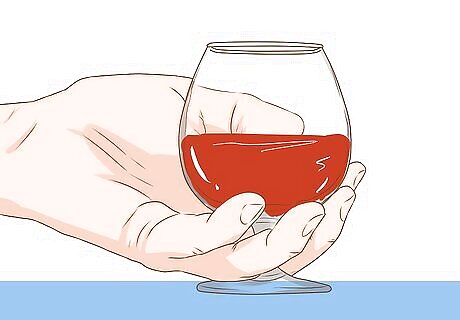
Warm the cognac. First, pour about ⁄4 fl oz (22 mL) of cognac into your glass. Next, hold the glass in the palm of your hand, allowing your body heat to slowly warm the cognac. This will elevate the flavors and intensify the aromas. Warm the cognac for 8 to 10 minutes before drinking it.
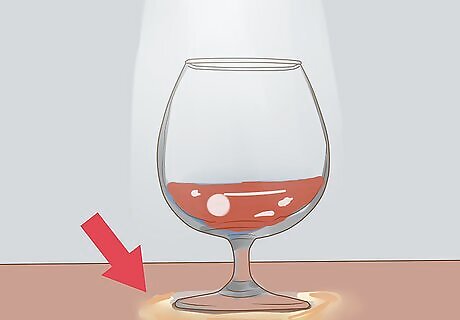
Examine the color. Look at the surface of the cognac to identify the colors you see. If necessary, tilt the glass under a light to see if the color changes. The more cognac you examine and drink, the more easily you will be able to identify quality cognac by sight. Light, one-dimensional straw colors indicate a younger cognac. Dark, layered colors with notes of gold and amber indicate an older cognac. The richer color comes from a longer maturation time in a cask.
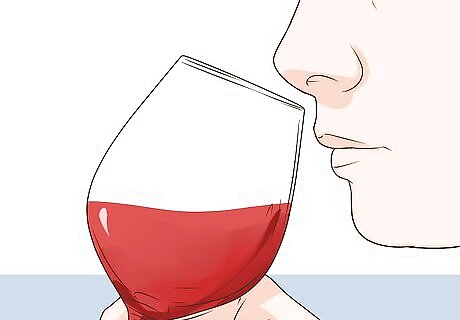
Smell the cognac. Swirl the glass gently to agitate the cognac. Next, lift the glass to your nose and breathe in deeply. Try to identify the different notes you can smell. With practice, you will be able to easily identify a high-quality cognac by smell. Younger cognacs have strong floral or fruity notes with a hint of spice. Older cognacs have many layers of smells. For example, an expensive cognac might have a deep spicy smell with subtle notes of vanilla and nuttiness.

Taste the cognac. Take a small sip of cognac and hold it in your mouth. Move it around your mouth and try to identify the different flavors. Once you have thoroughly tasted the cognac, you can swallow it. Continue drinking the cognac one sip at a time, examining the flavors of each mouthful. Less expensive cognacs often have strong fruity flavors such as raisin, apricot, orange or lemon. Mid-range cognacs can have floral rose or clover notes. Expensive cognacs have a variety of flavors, but usually include spiced notes such as nutmeg, cinnamon, or coffee.
Mixing Cognac
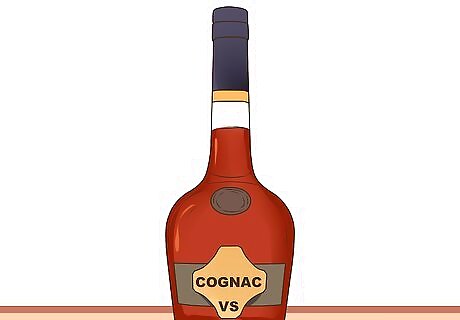
Choose an inexpensive cognac. If you use an expensive cognac in a mixed drink, the other ingredients will drown out the rich, mellow flavors. However, younger cognacs lack the depth of flavor that older cognacs have. Therefore, they are the perfect choice for mixed drinks. Choose a Very Superior (VS) or Very Superior Old Pale (VSOP) cognac. VS cognacs are aged for 2 years. These cognacs are the least expensive. VSOP cognacs are aged for 4 years. These cognacs are inexpensive and can be mixed or enjoyed straight.
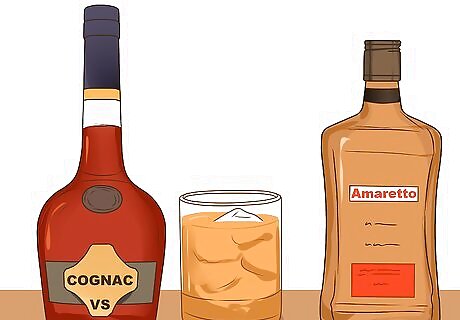
Enjoy a French Connection cocktail. This cocktail is known for its bold almond flavors. First, choose a short old-fashioned glass. Next, fill the glass with the drink ingredients and add a few cubes of ice. Use a long spoon to stir the drink briefly before serving it. The drink ingredients are: 1.5 fl oz (44 mL) of cognac 1 fl oz (30 mL) of Amaretto liquor
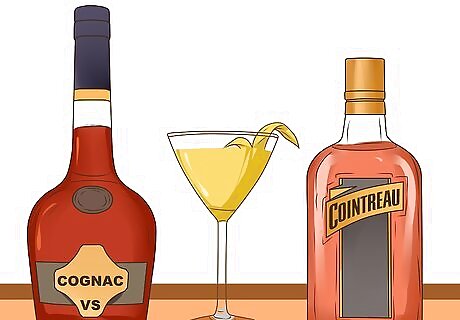
Make a Sidecar. This drink has refreshing citrus notes. First, fill a cocktail shaker with ice. Next, pour the drink ingredients into the tumbler. Cap the shaker and shake it for about 10 seconds. Strain the mixture into a martini glass and serve it with a lemon twist garnish. To create the drink, combine: ⁄4 fl oz (22 mL) of Cointreau ⁄4 fl oz (22 mL) of lemon juice 1.5 fl oz (44 mL) of cognac
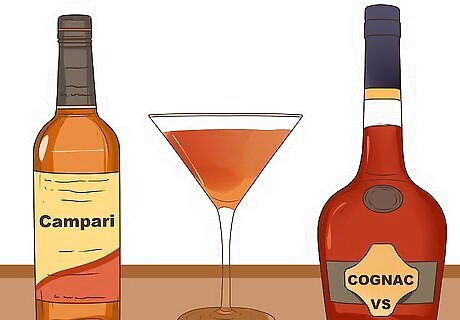
Drink a Stinger. Stingers have deeply aromatic herbal flavors. First, muddle 2 mint sprigs in the bottom of a large metal tumbler. Next, fill a cocktail shaker with ice and add the drink ingredients. Cap the shaker and shake it for a few seconds. Strain the mixture into a tall glass filled with ice and serve it with a mint leaf garnish. The ingredients include: 1 fl oz (30 mL) of Campari liquor 1 fl oz (30 mL) of cognac ⁄4 teaspoon (1.2 mL) of maple syrup
Pairing Cognac
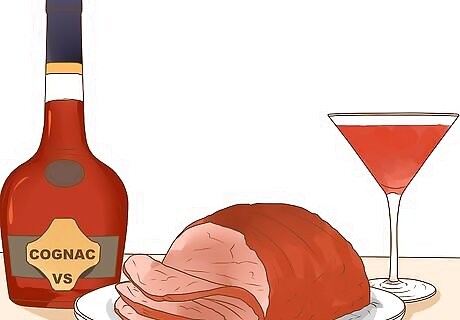
Serve cognac with rich foods. The mellow floral notes in cognac pair wonderfully with rich foods, cutting through the richness to bring out bright flavors. When serving cognac, consider pairing it with: Duck confit Pâtés, such as pâté du foie gras Hearty tomato-based pastas Roasted meats
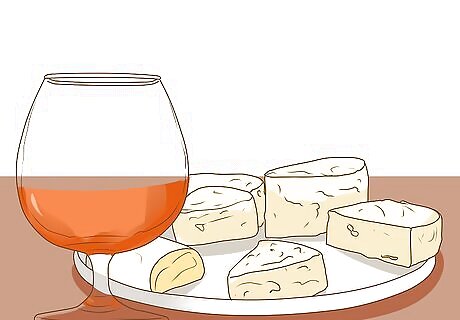
Pair cognac with a cheese plate. Cheese plates are excellent as appetizers, snacks, or even a savory “dessert.” There are different cheeses that taste good with different ages of cognac. Arrange the cheese plate with 2 or 3 cheeses, dried and fresh fruit, roasted nuts, crackers, and cured meats. VS cognacs pair well with creamy mellow cheeses such as Roquefort and mascarpone. VSOP cognacs taste wonderful with mature hard cheeses such as cheddar and aged gouda. XO cognacs pair wonderfully with a nutty aged Mimolette cheese and pungent Parmesans.
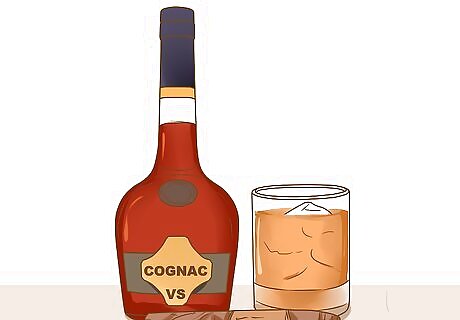
Enjoy a cigar with your cognac. Traditionally, expensive cognacs are enjoyed after dinner with a fine cigar. First, pour the cognac and warm it in your hand. Next, light the cigar. Smoke the cigar between sips of cognac. When choosing a cigar, match the flavors in the cognac. For example, pair a mellow cognac with a mild-flavored cigar.


















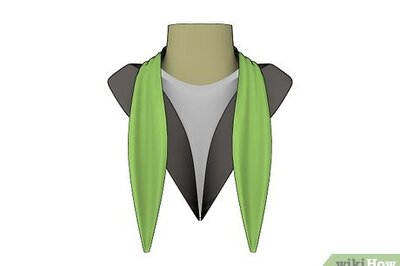

Comments
0 comment